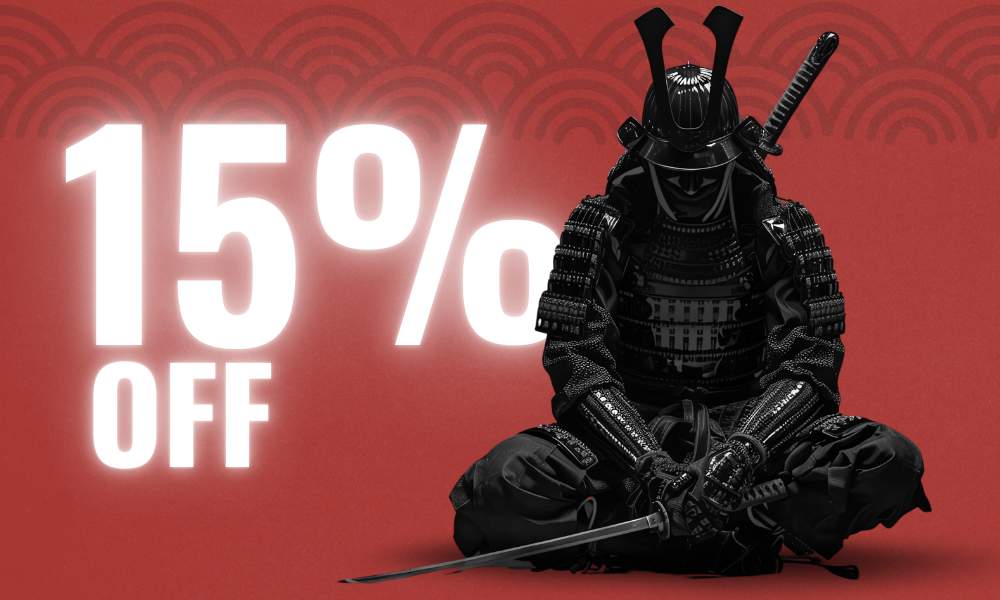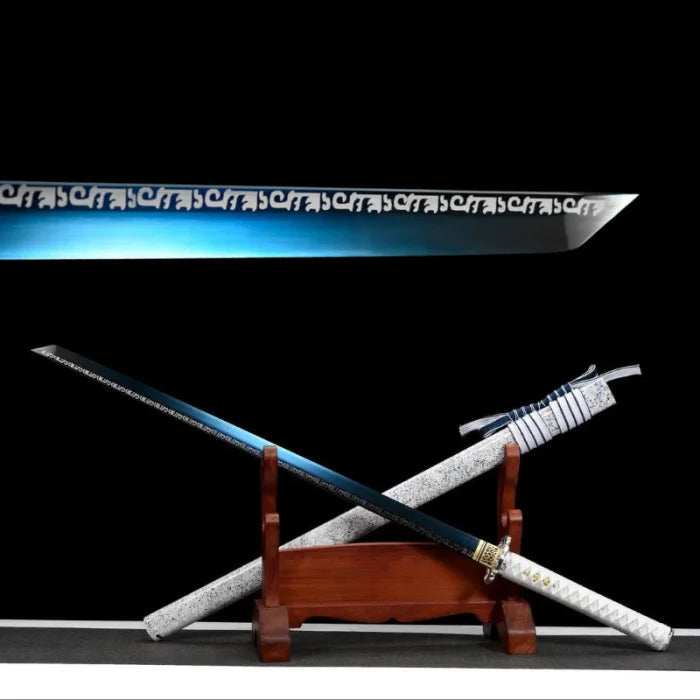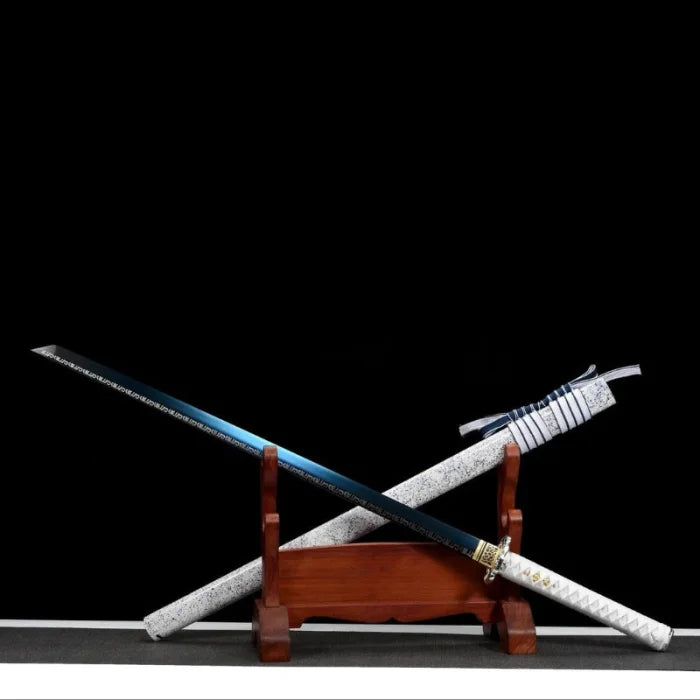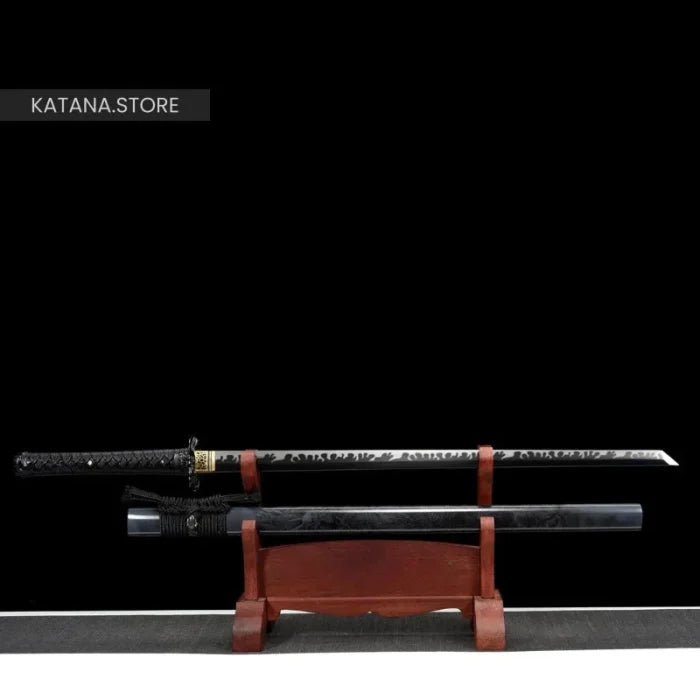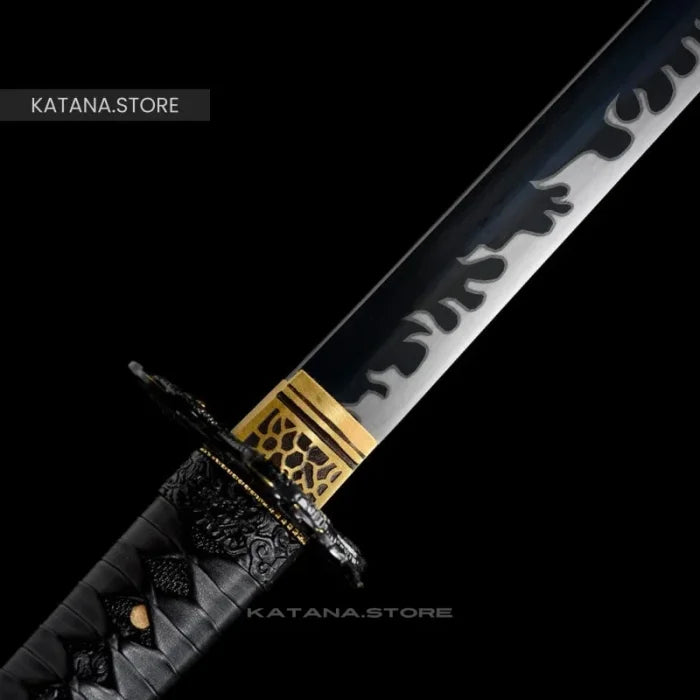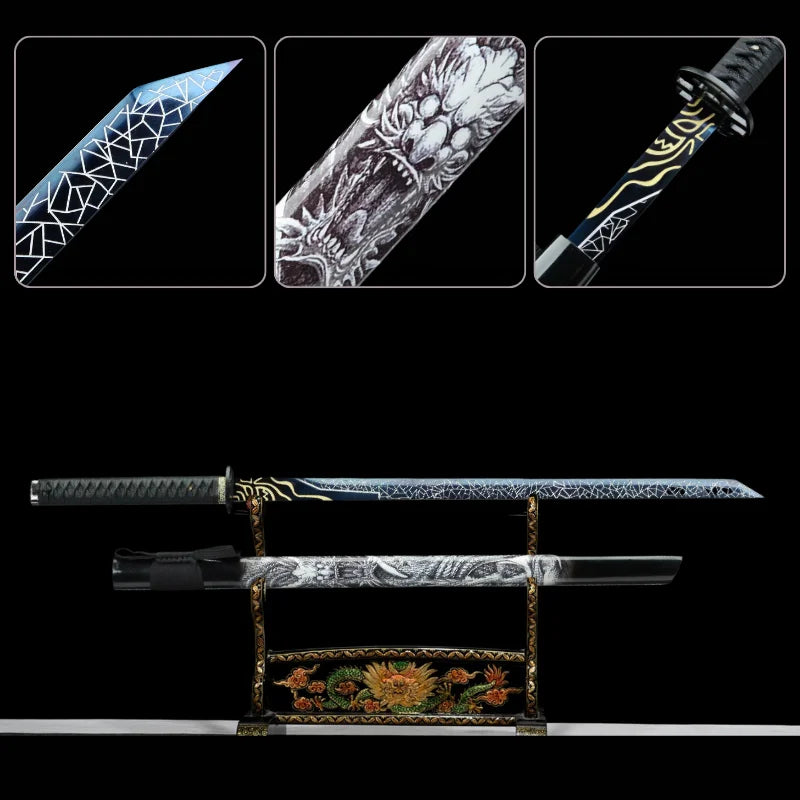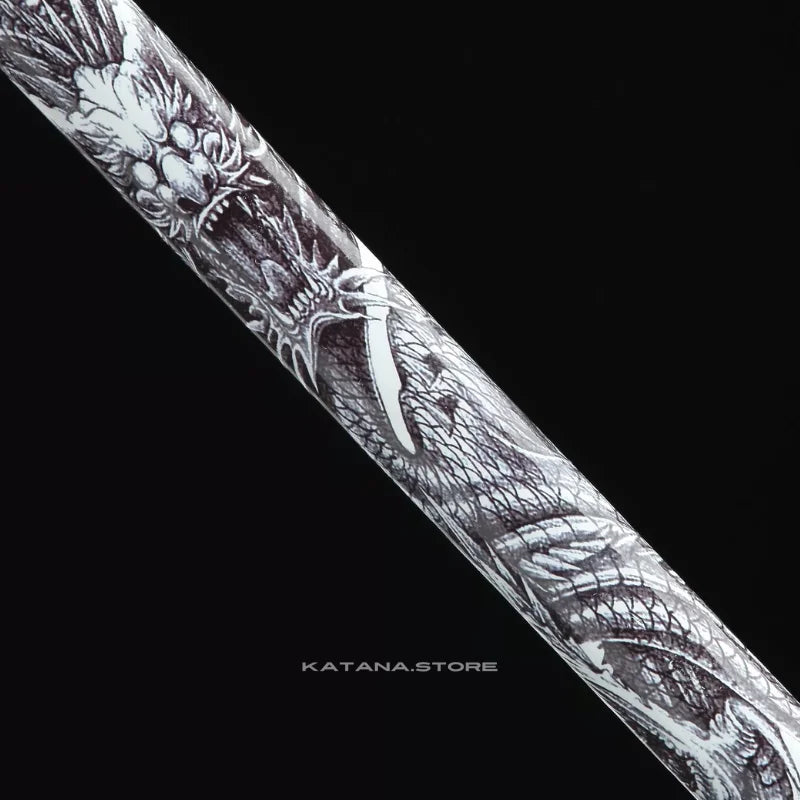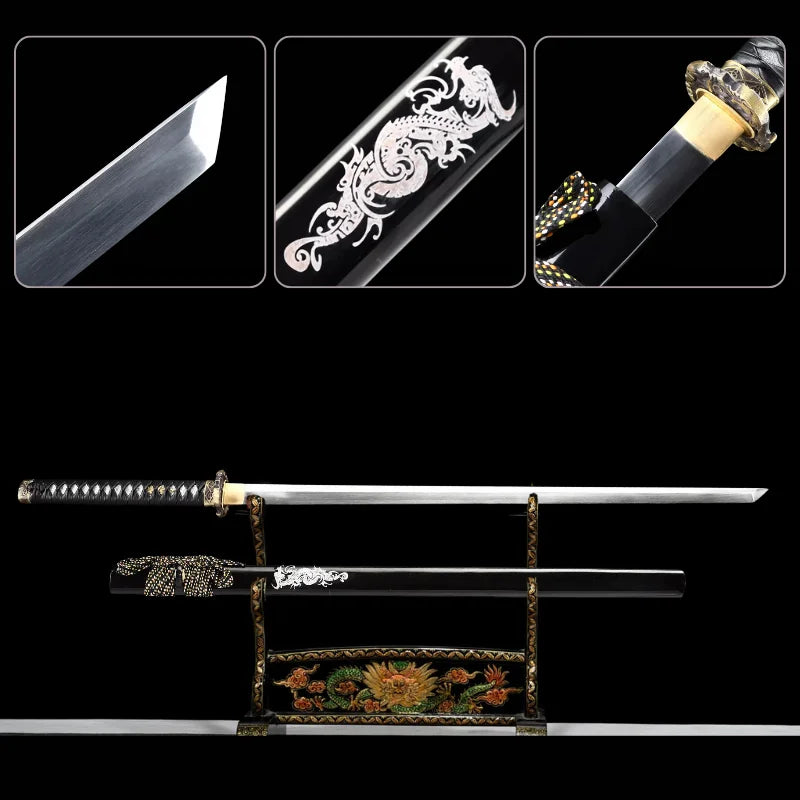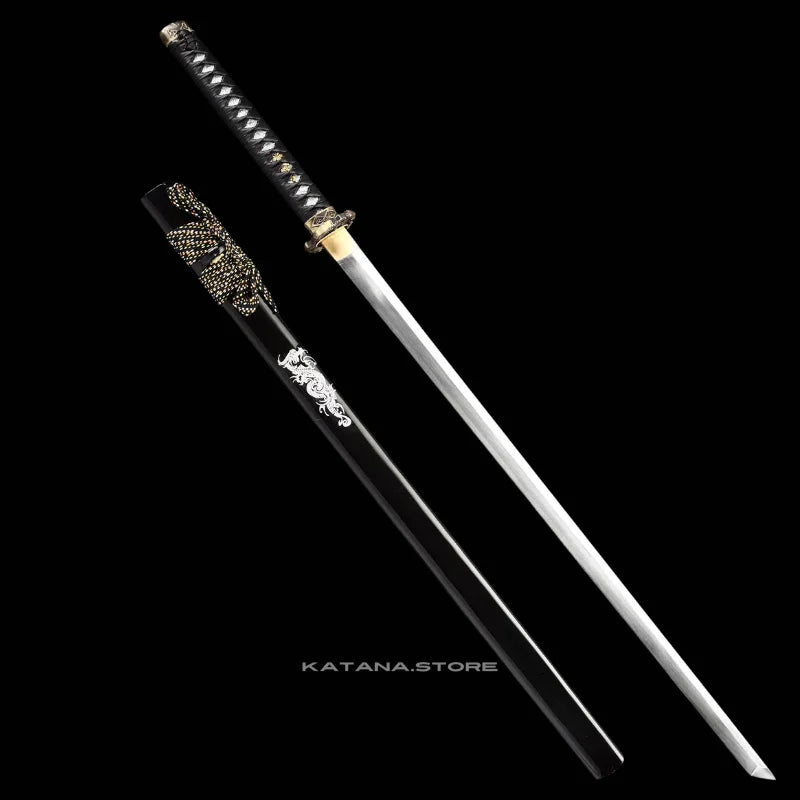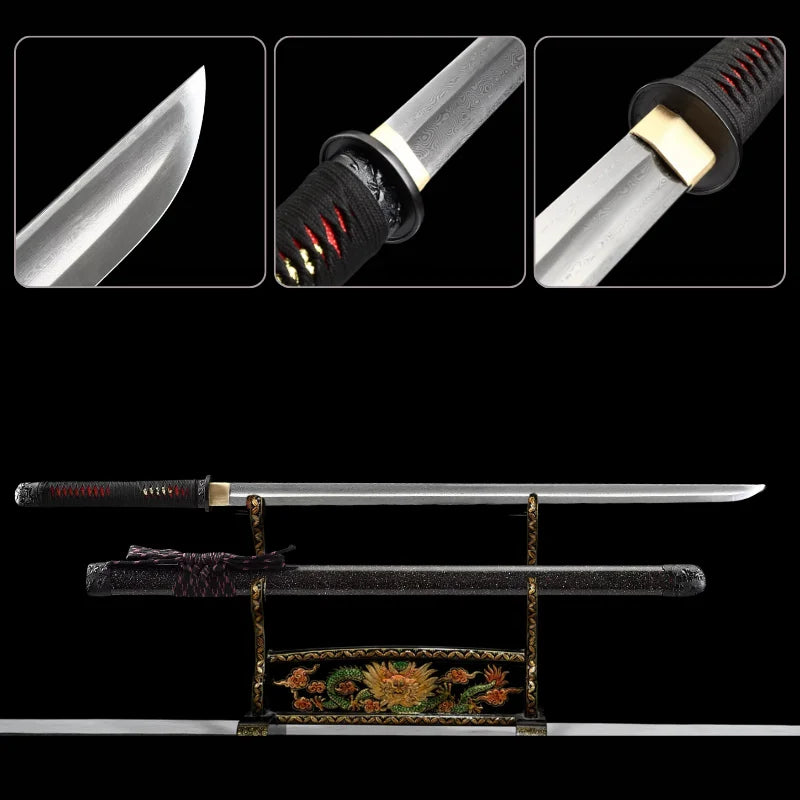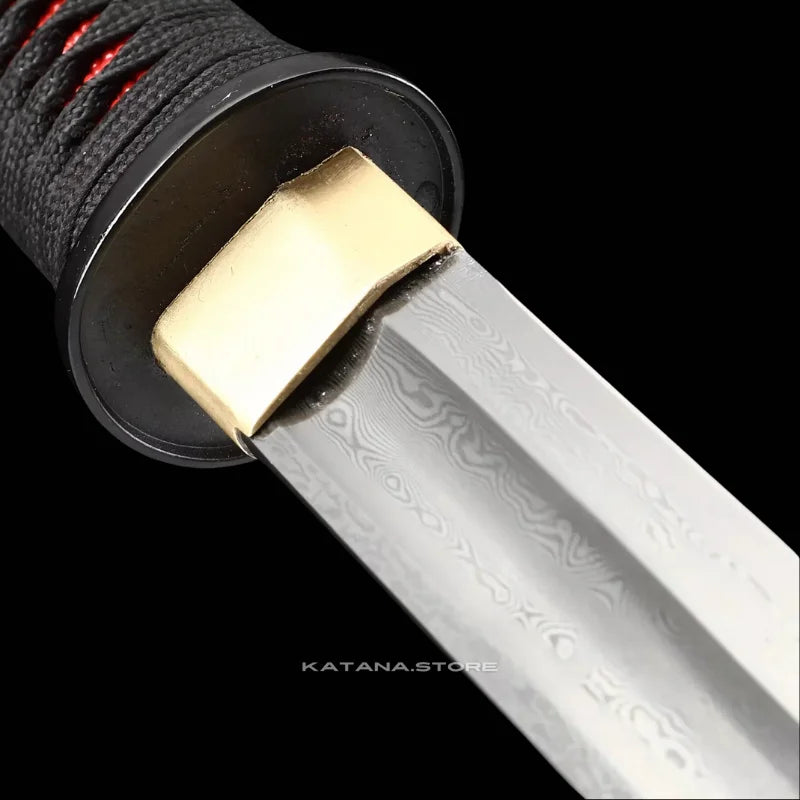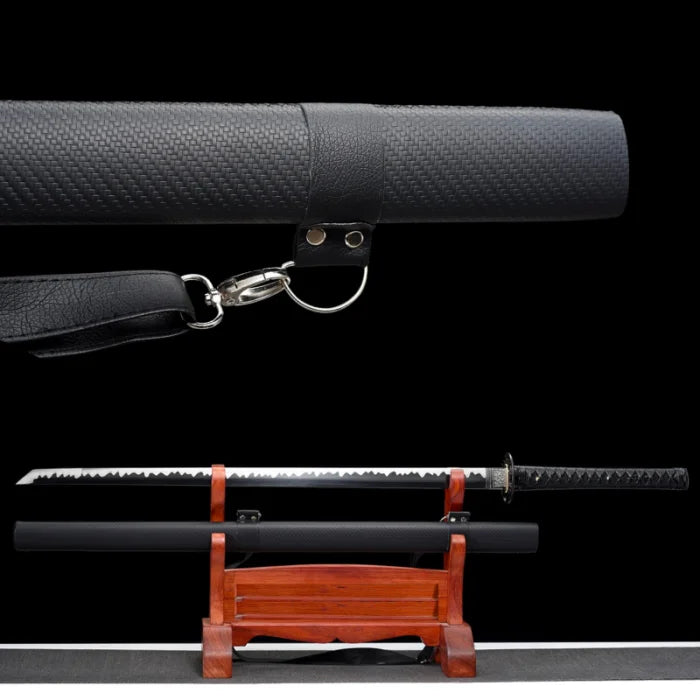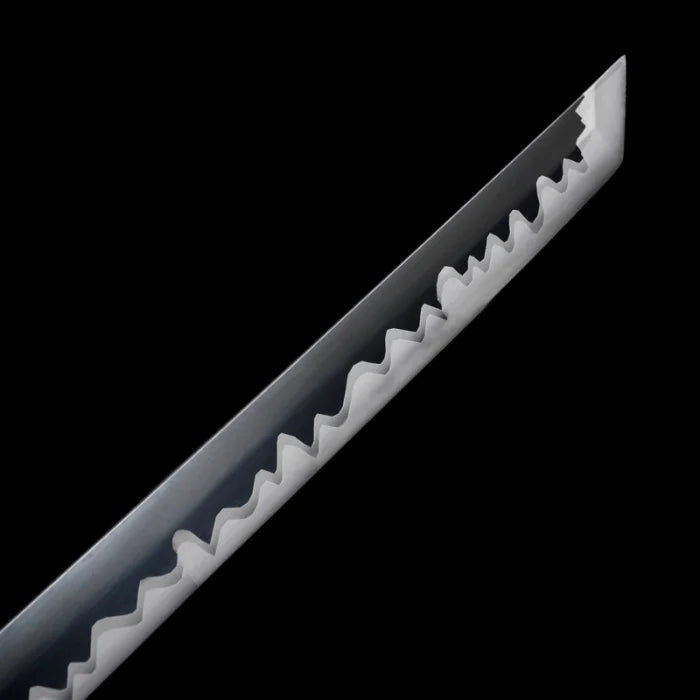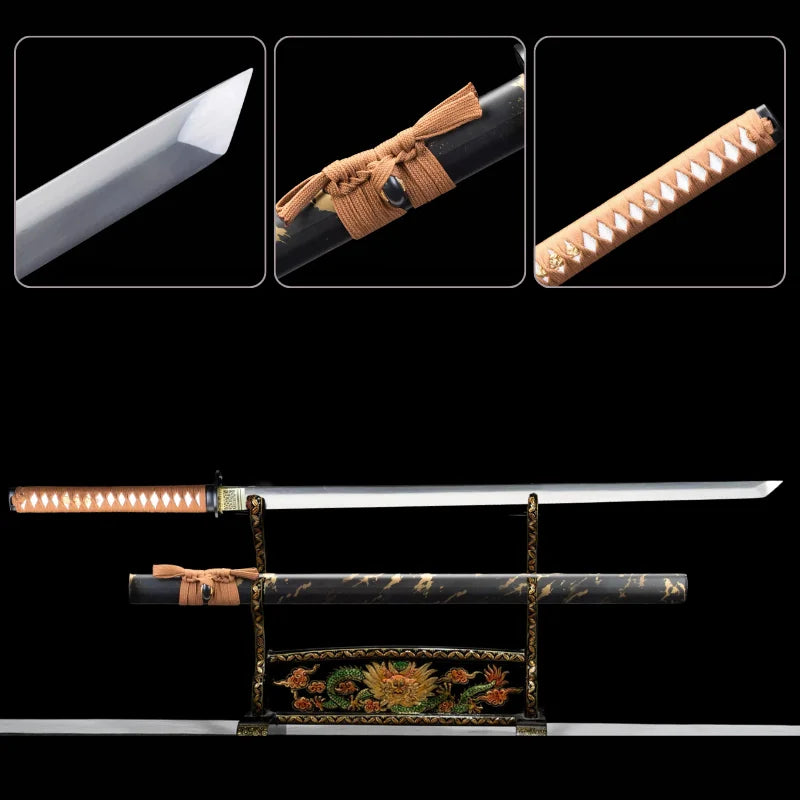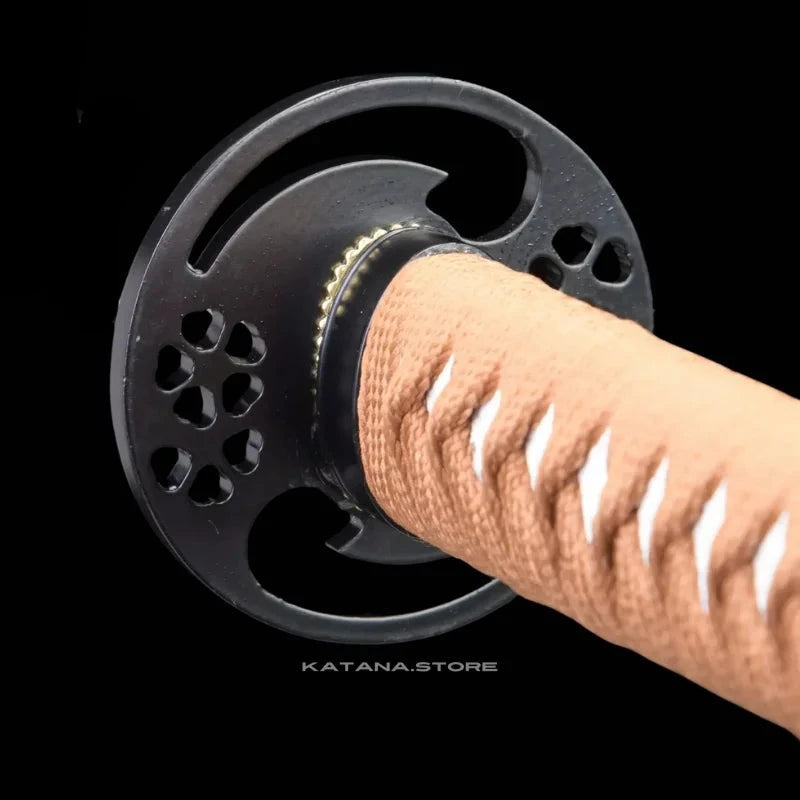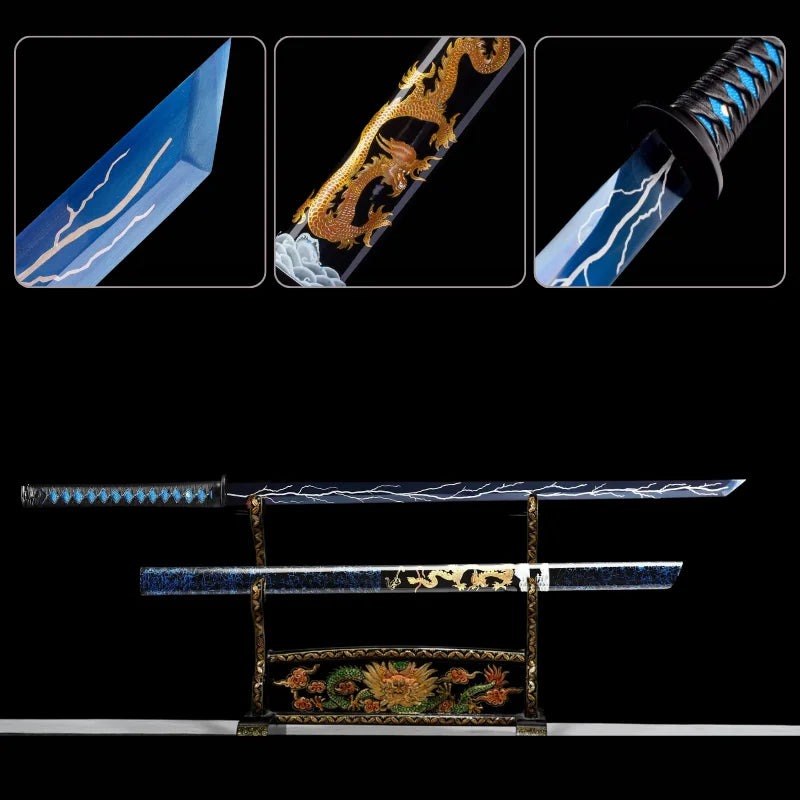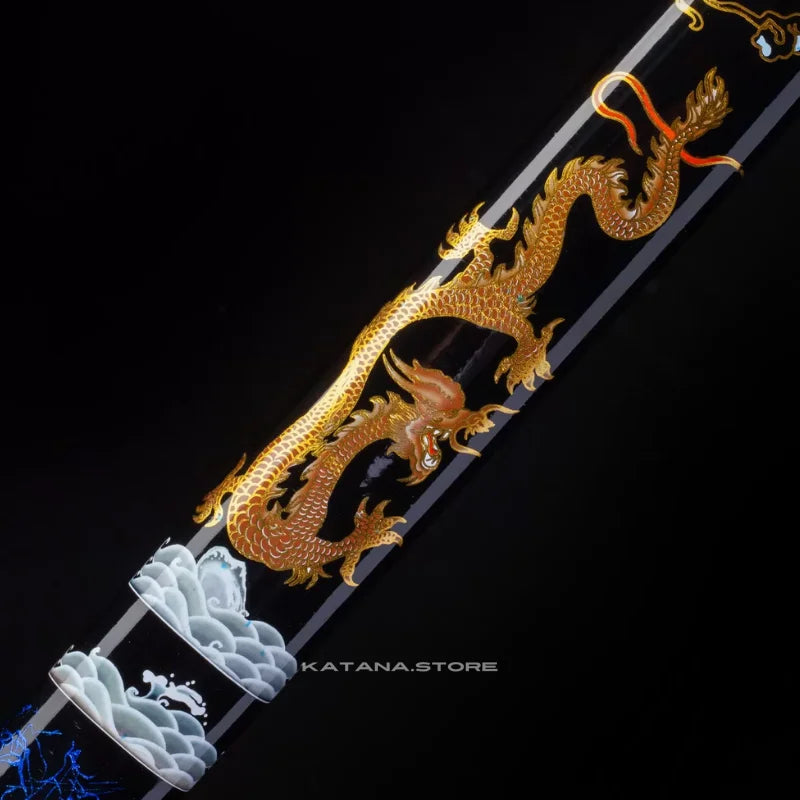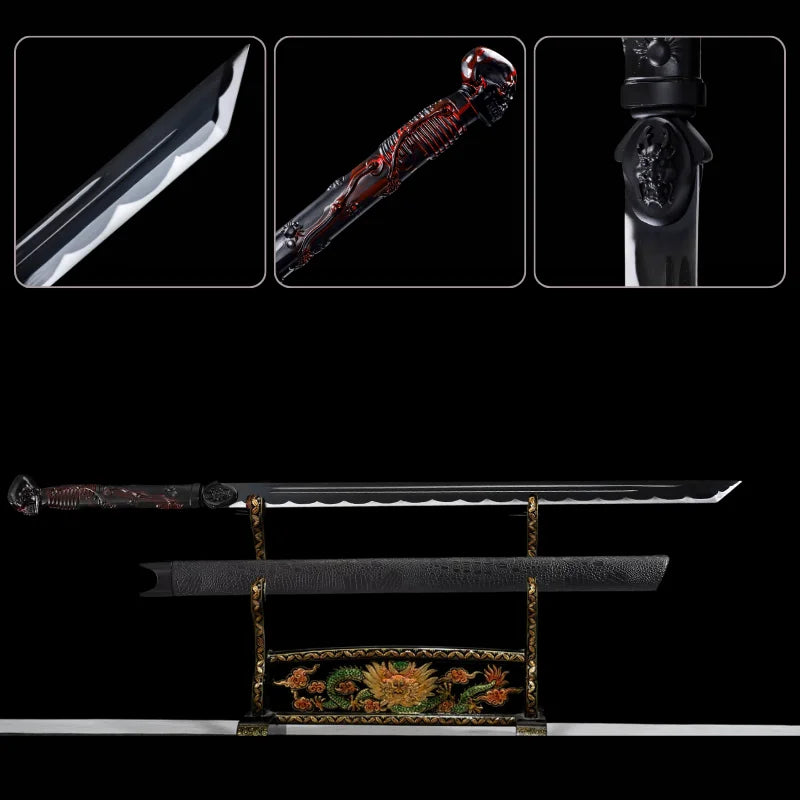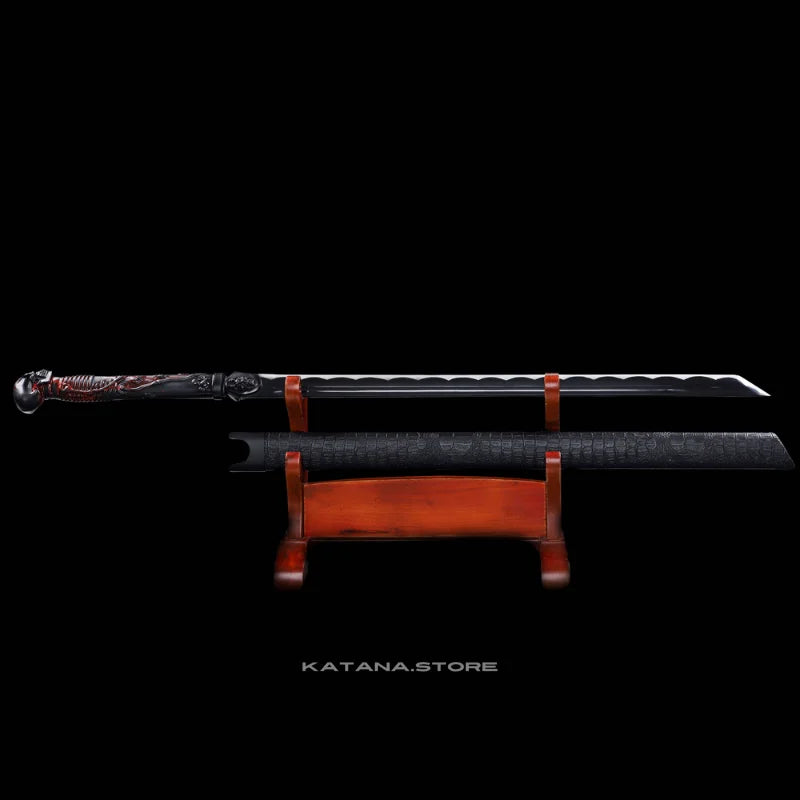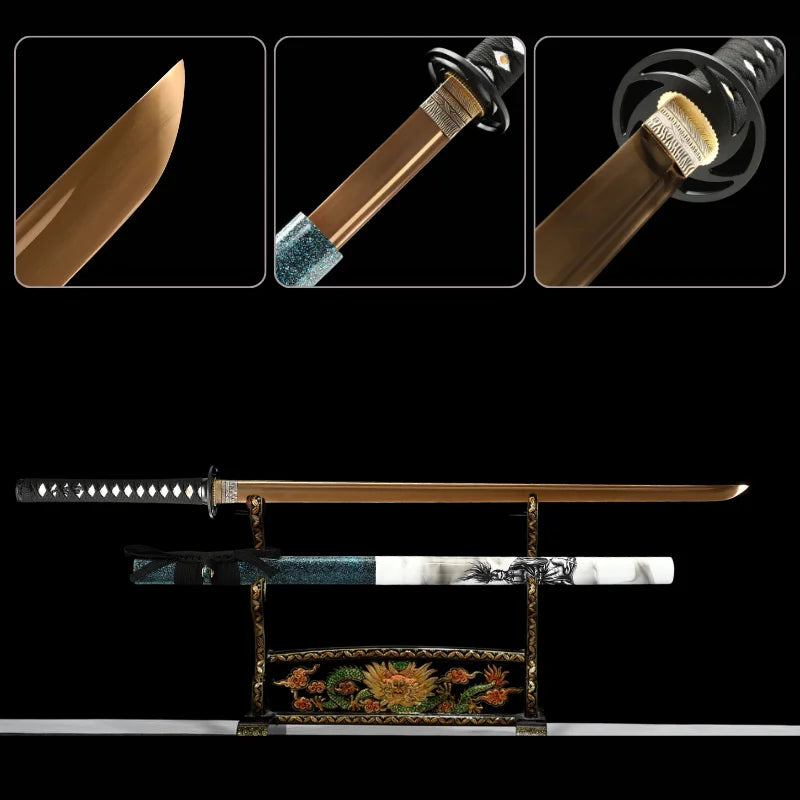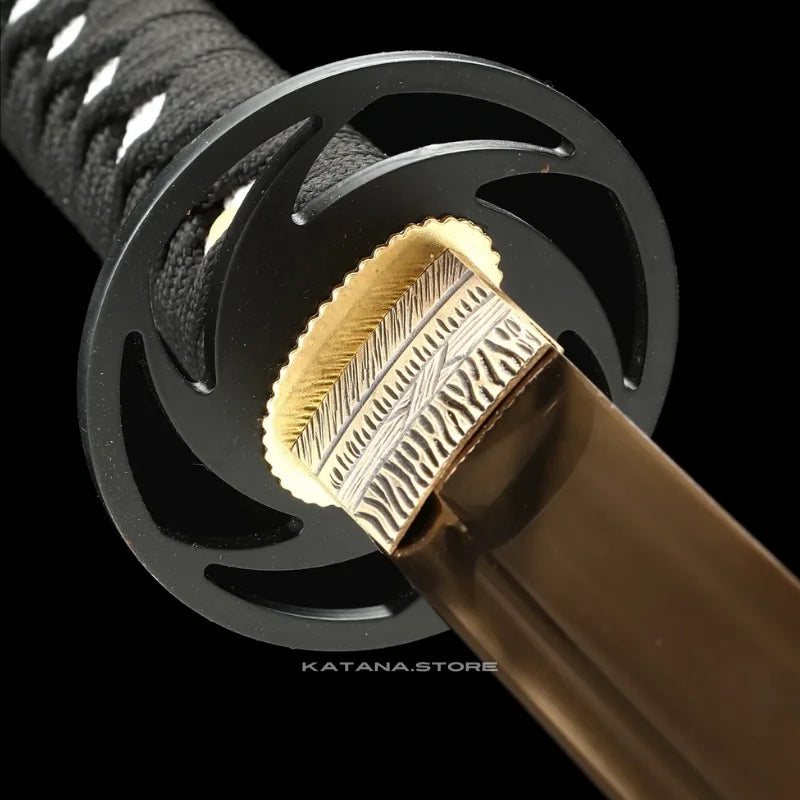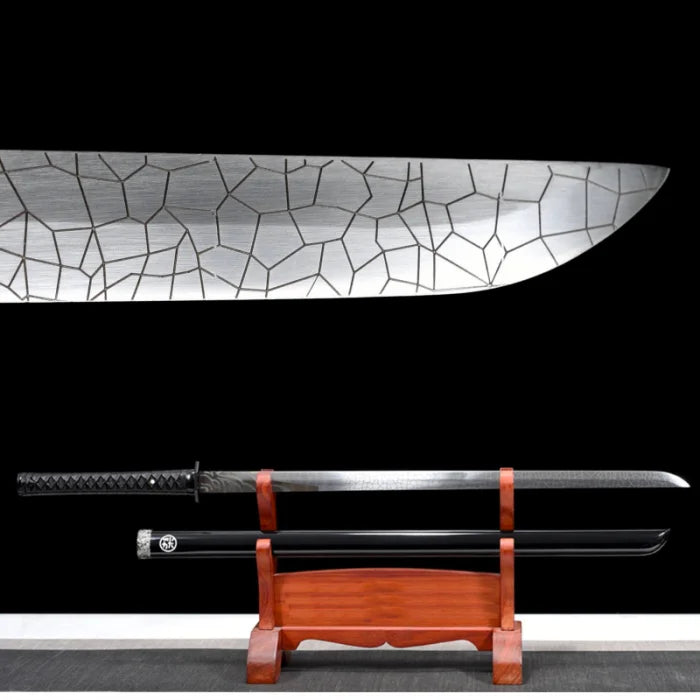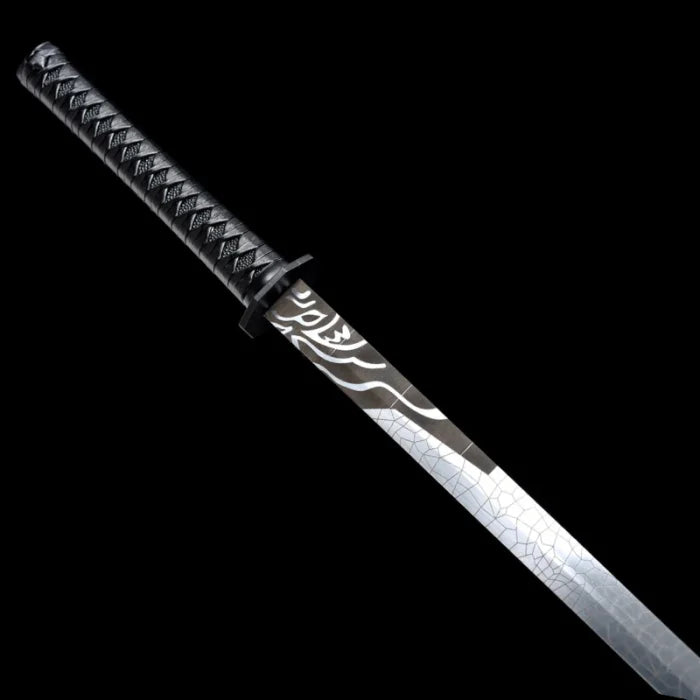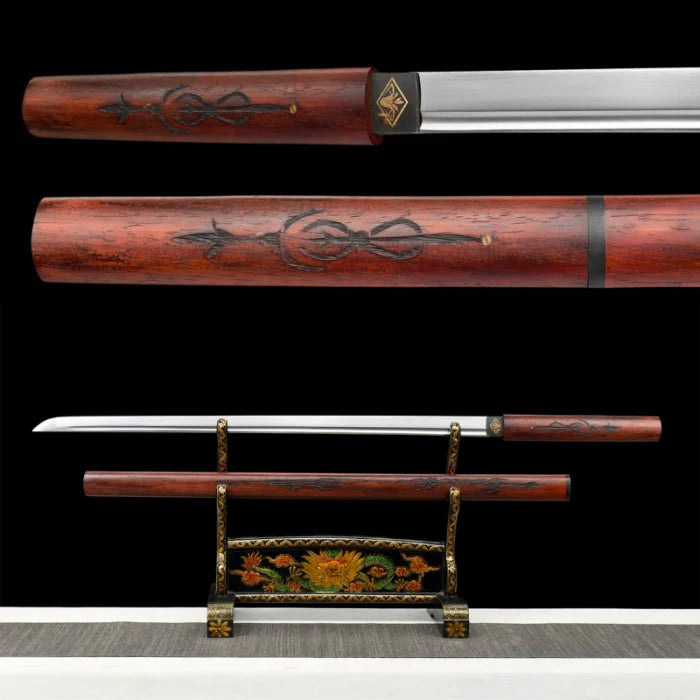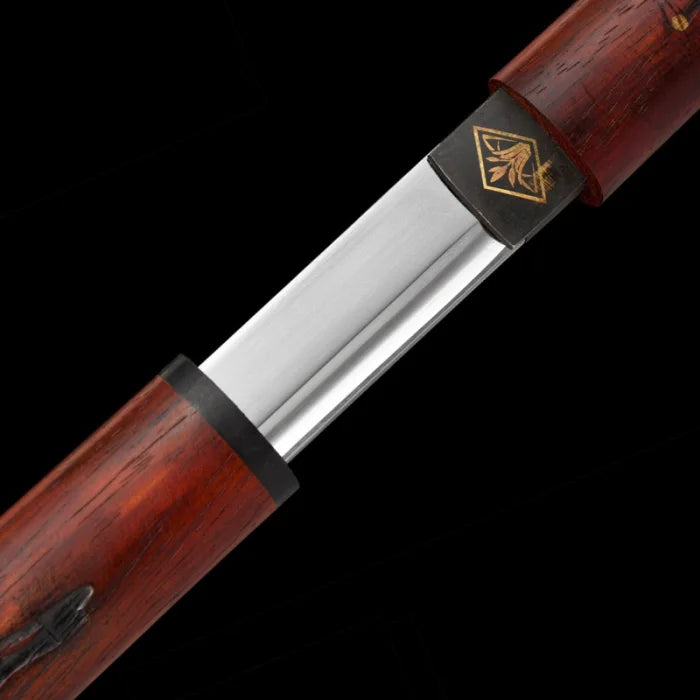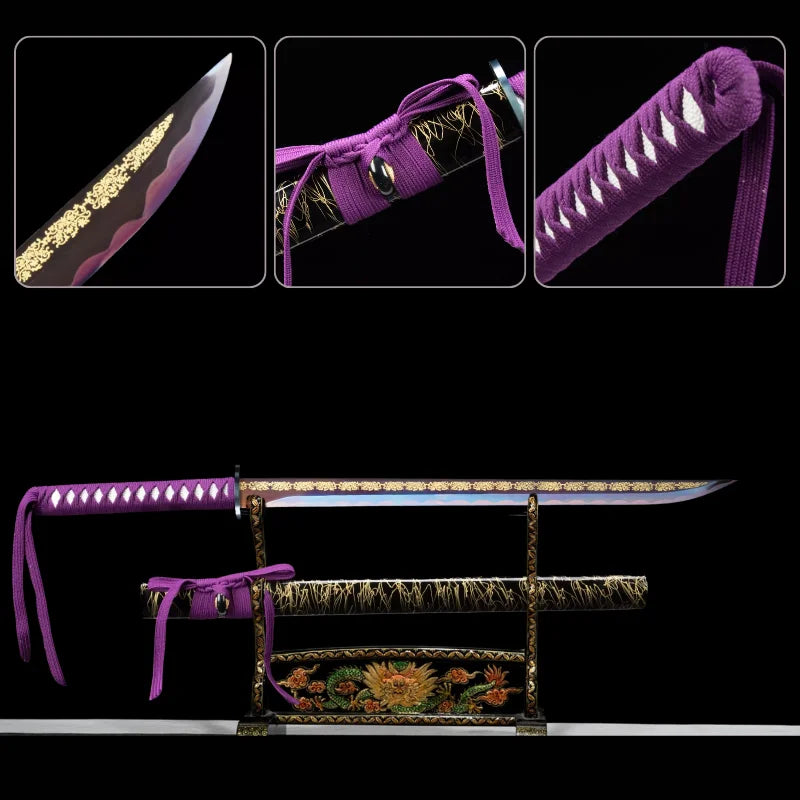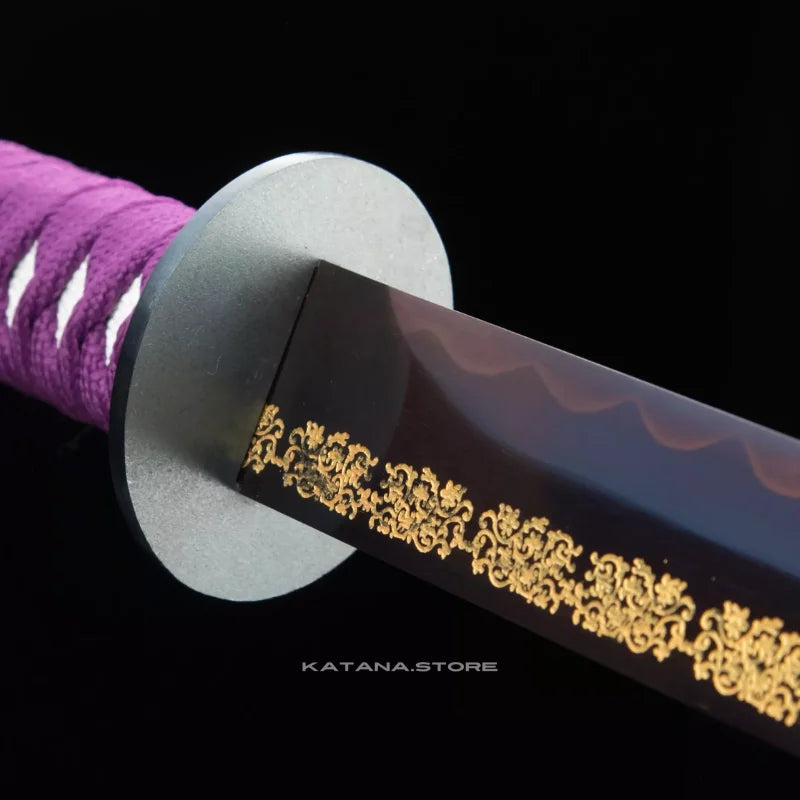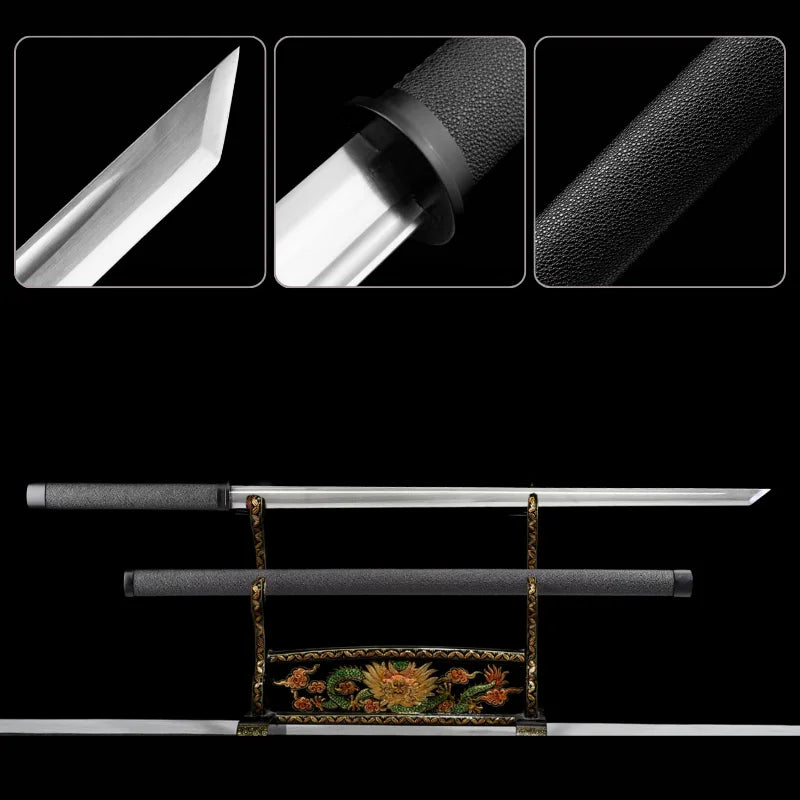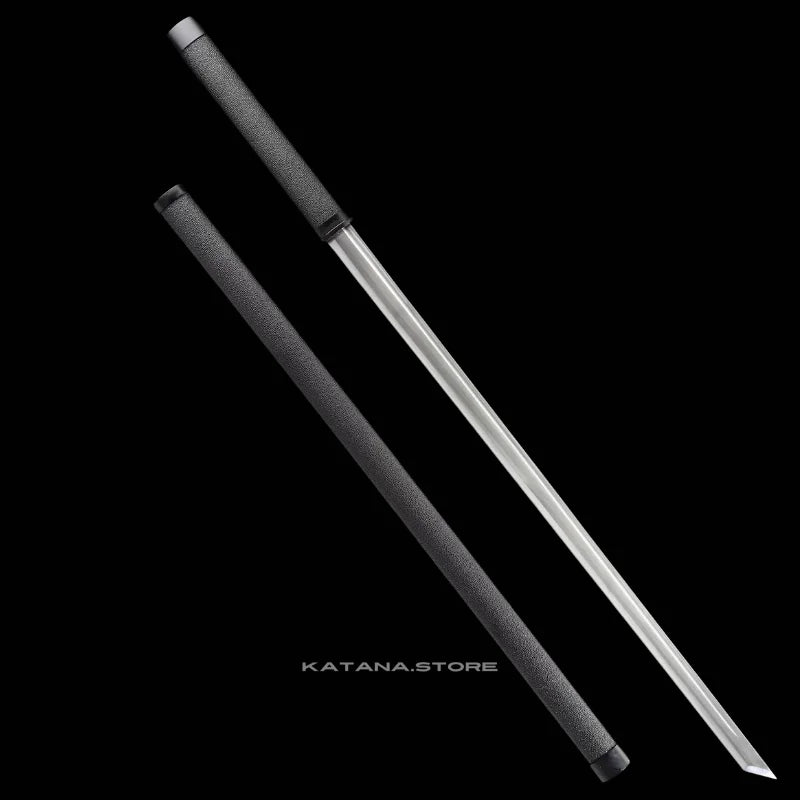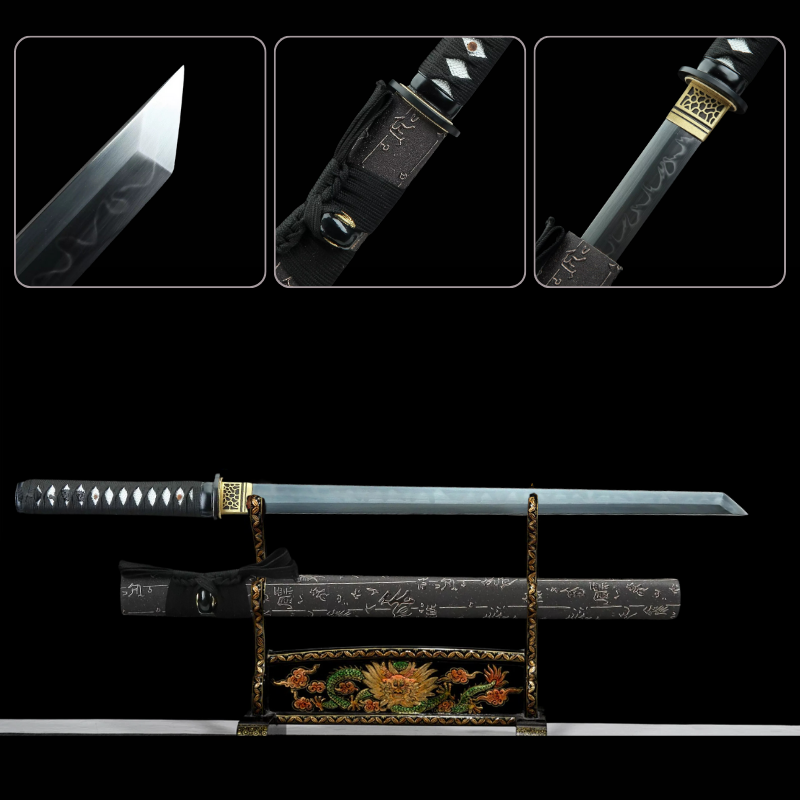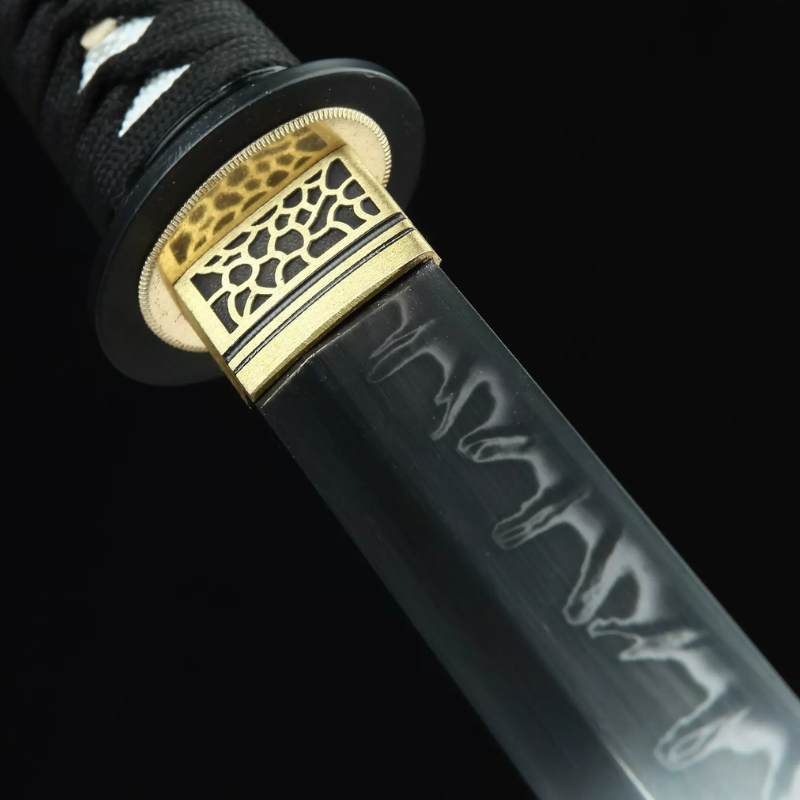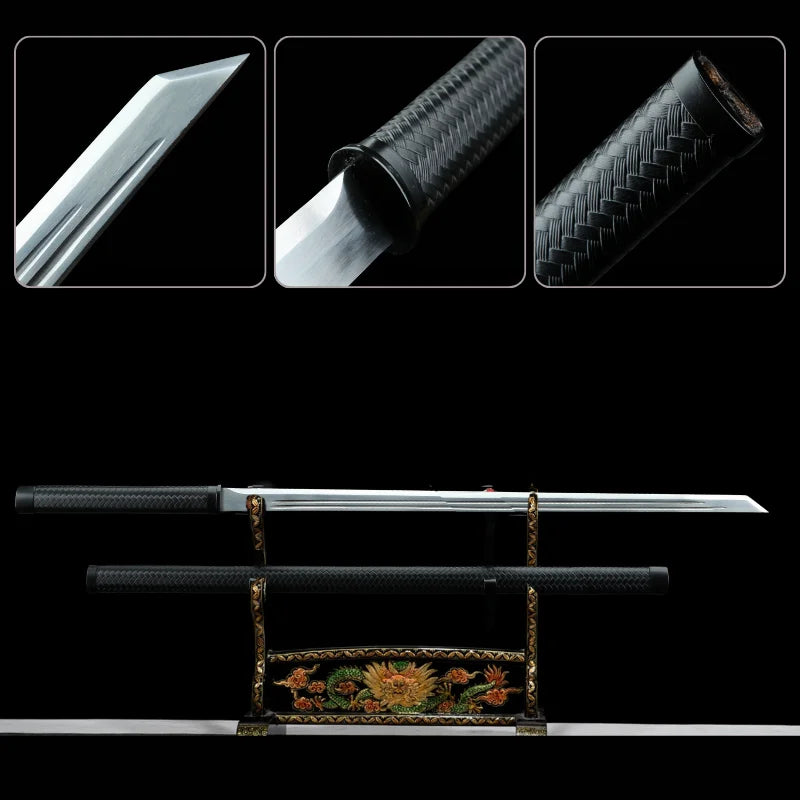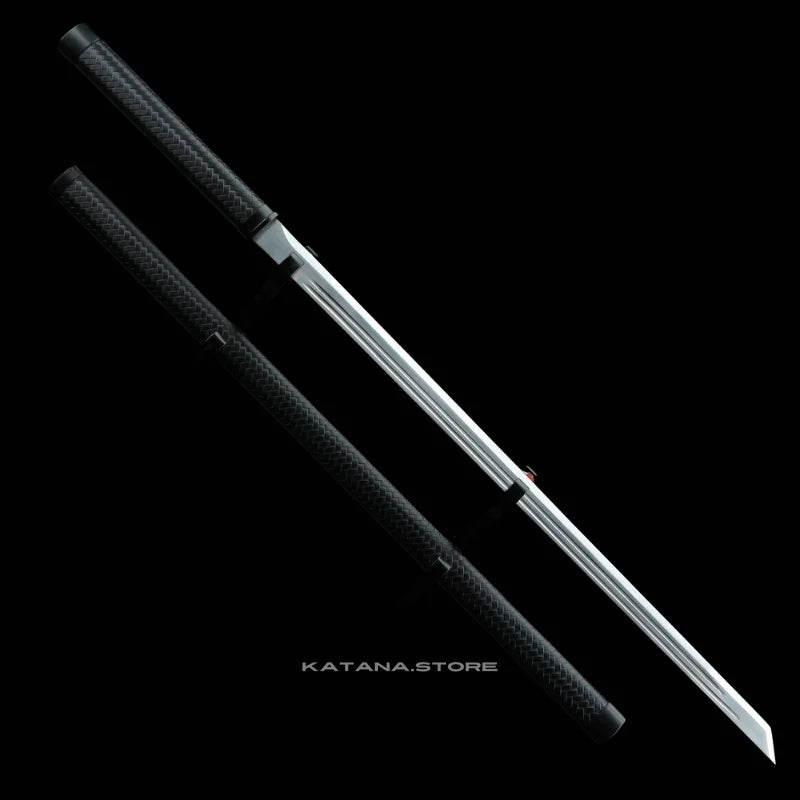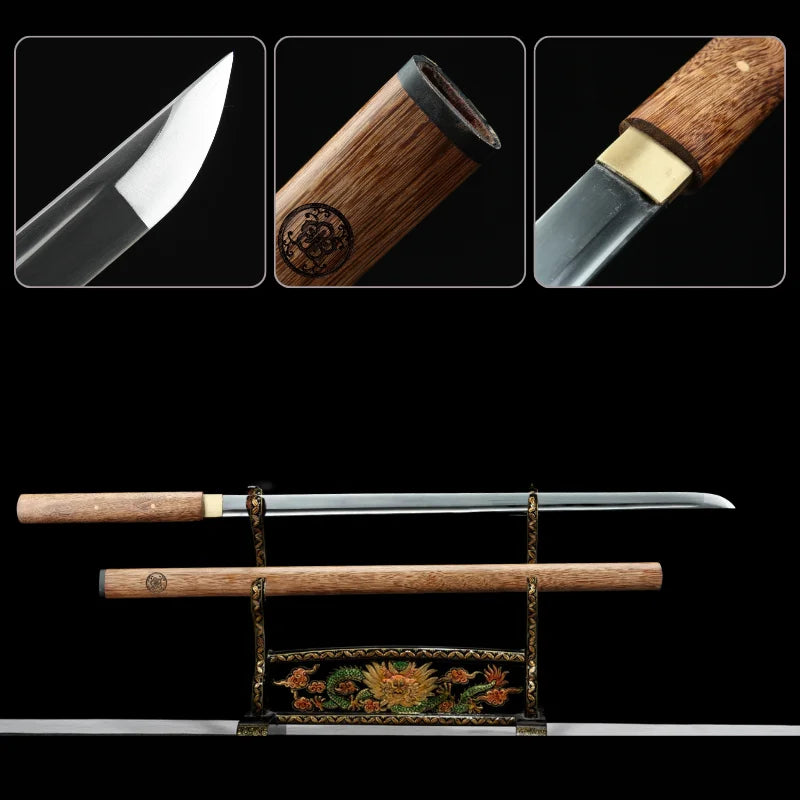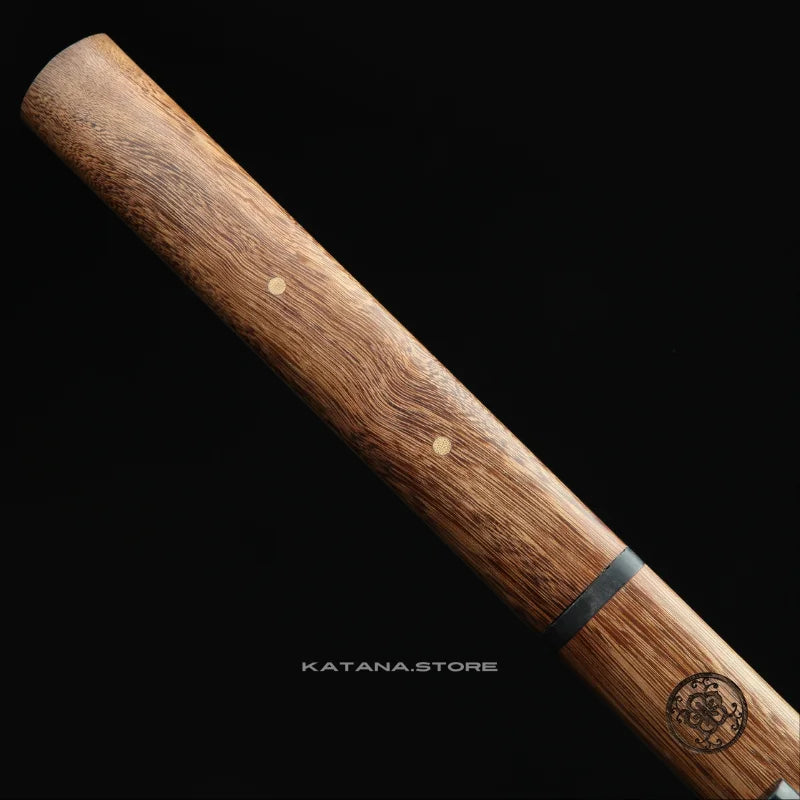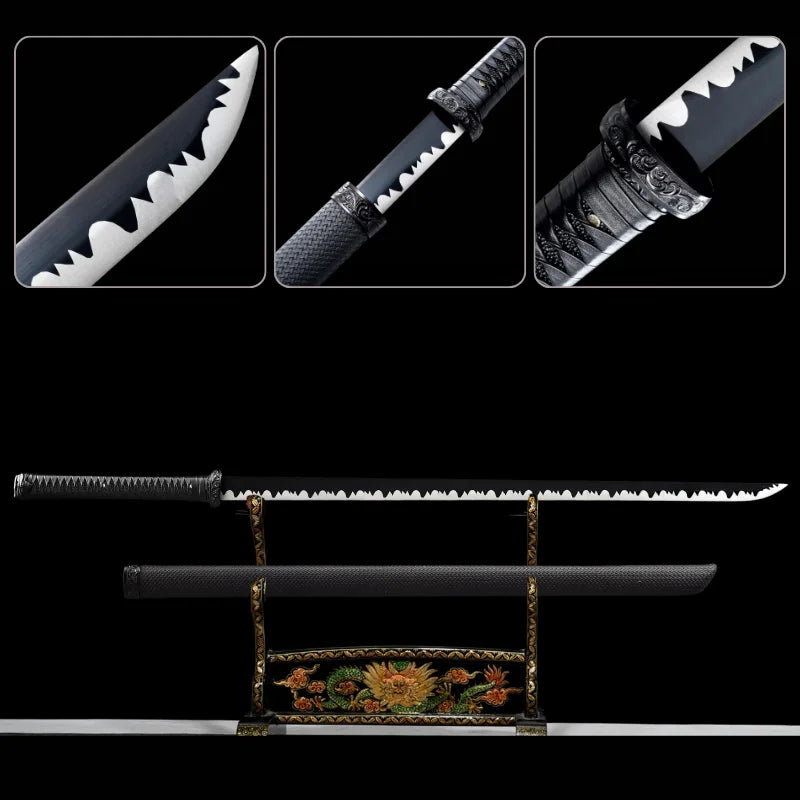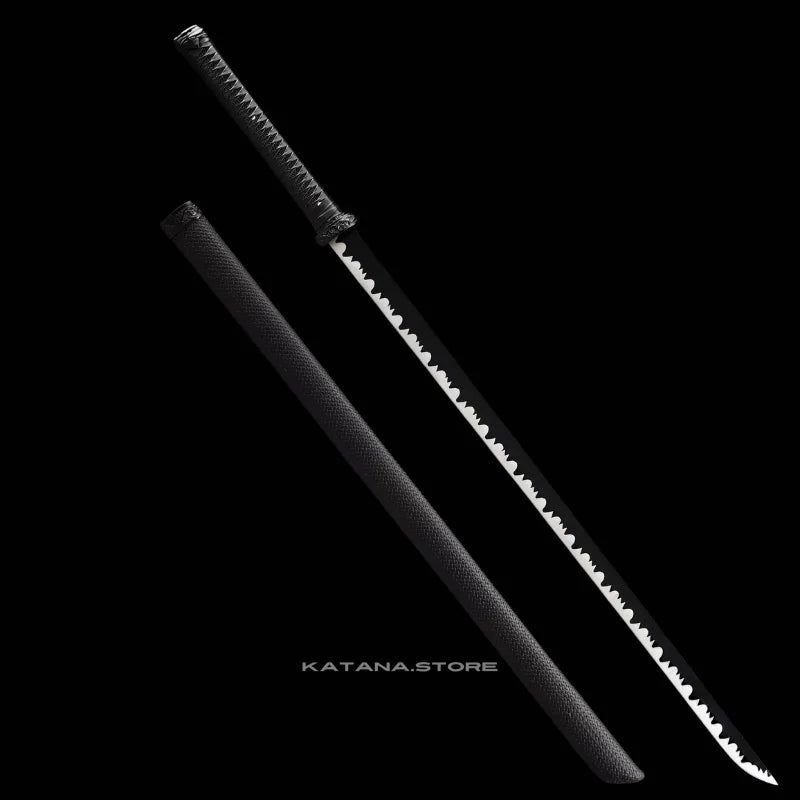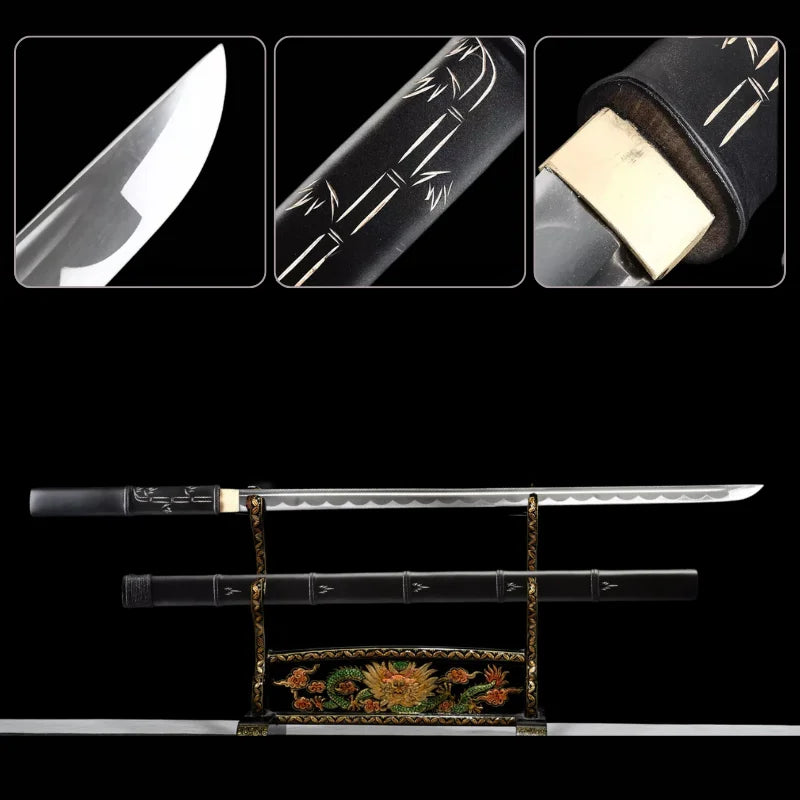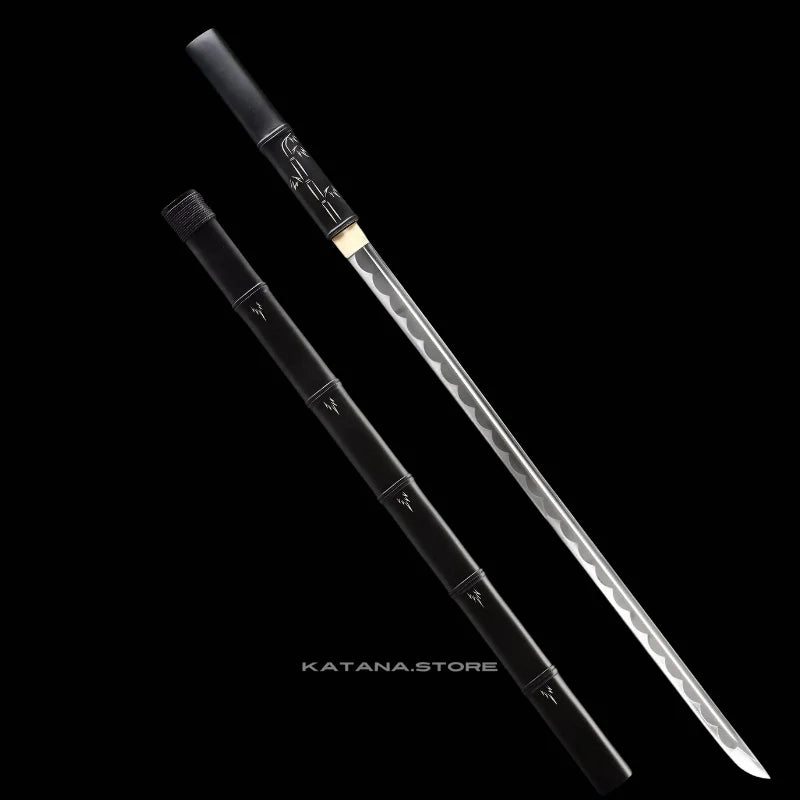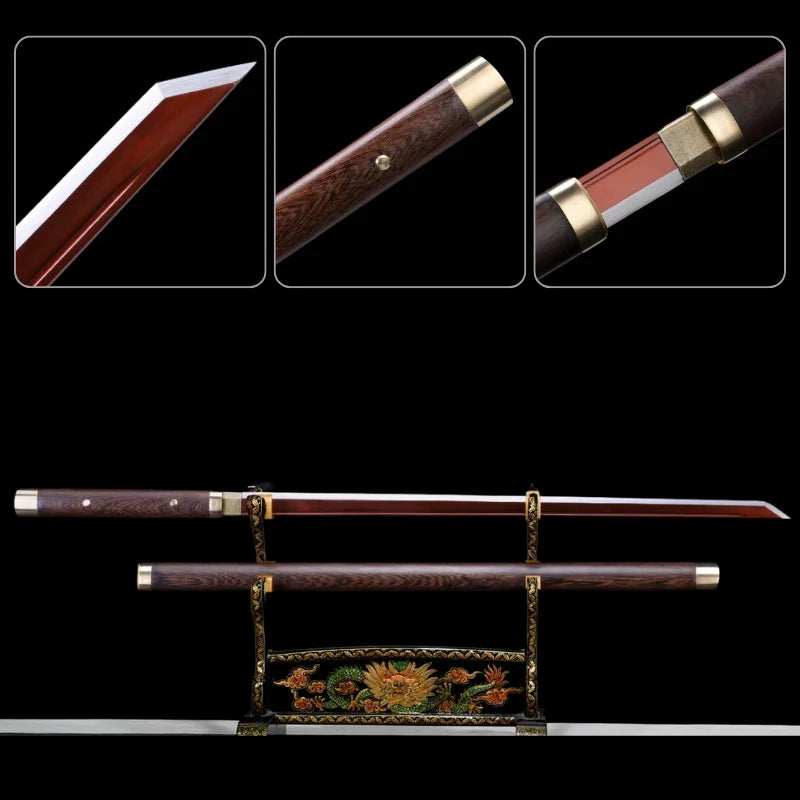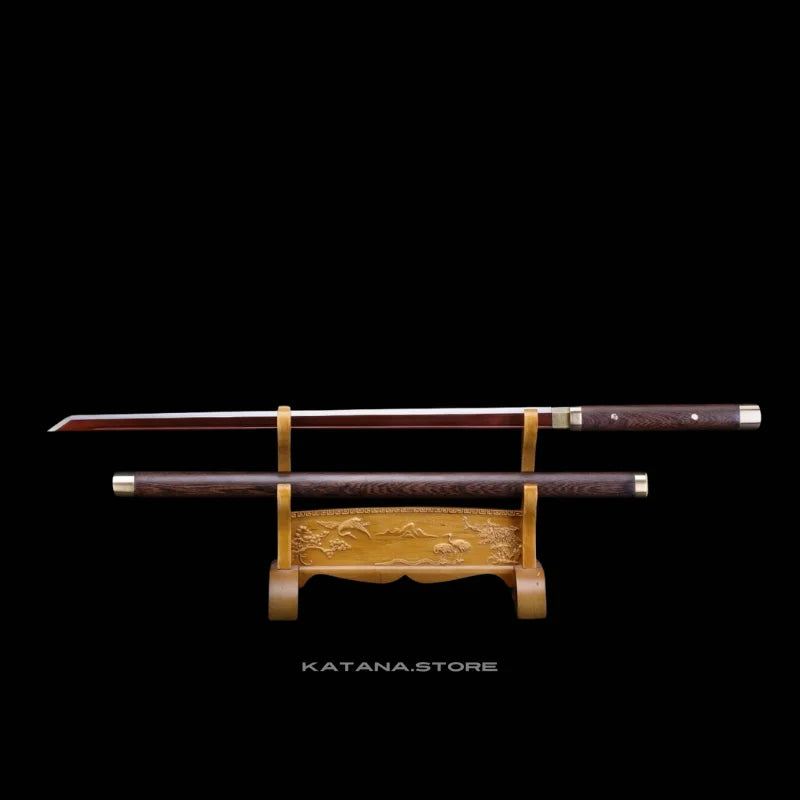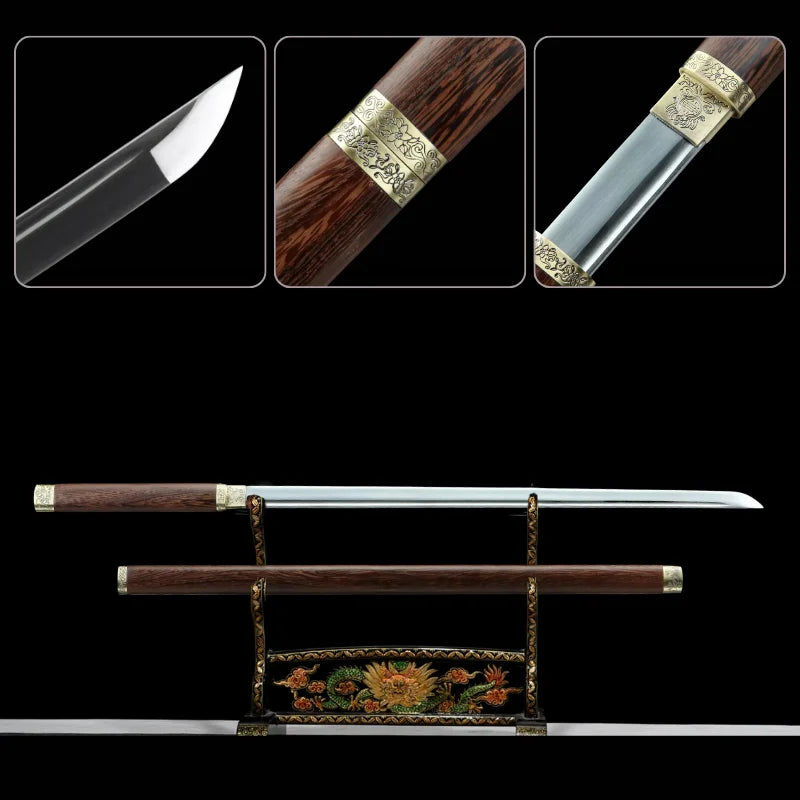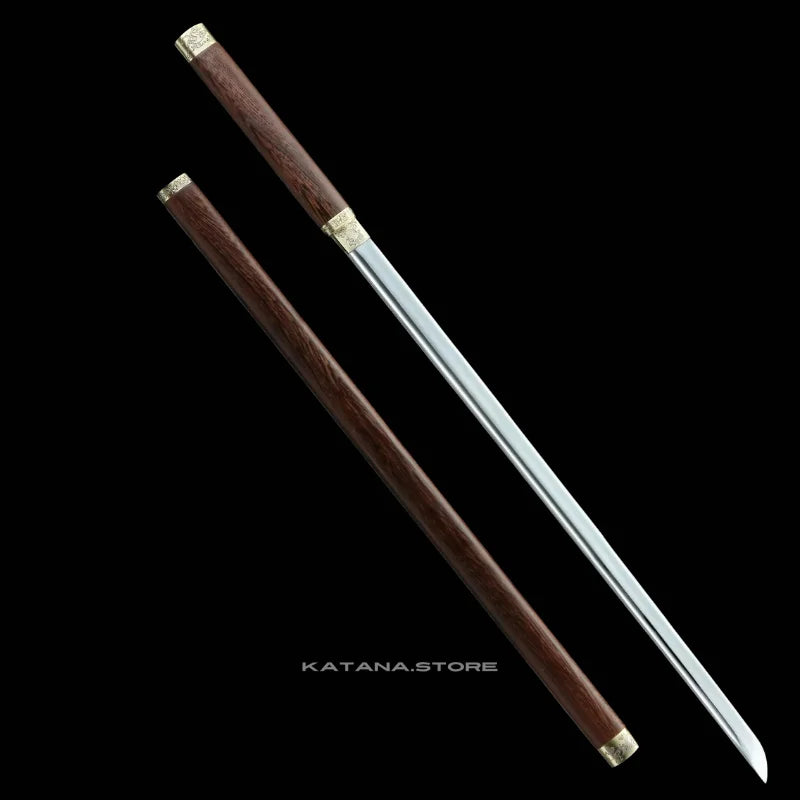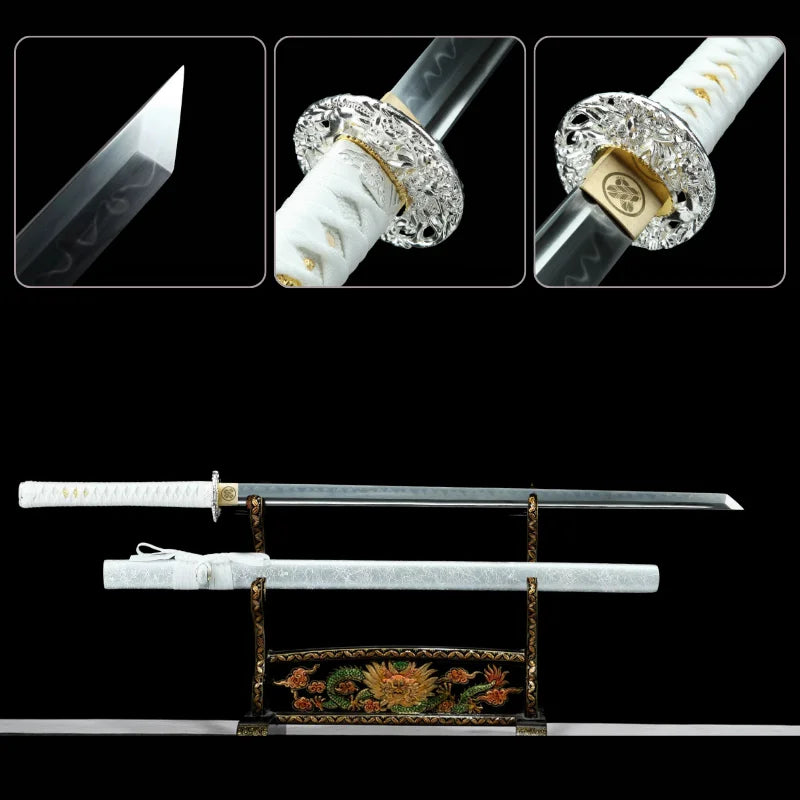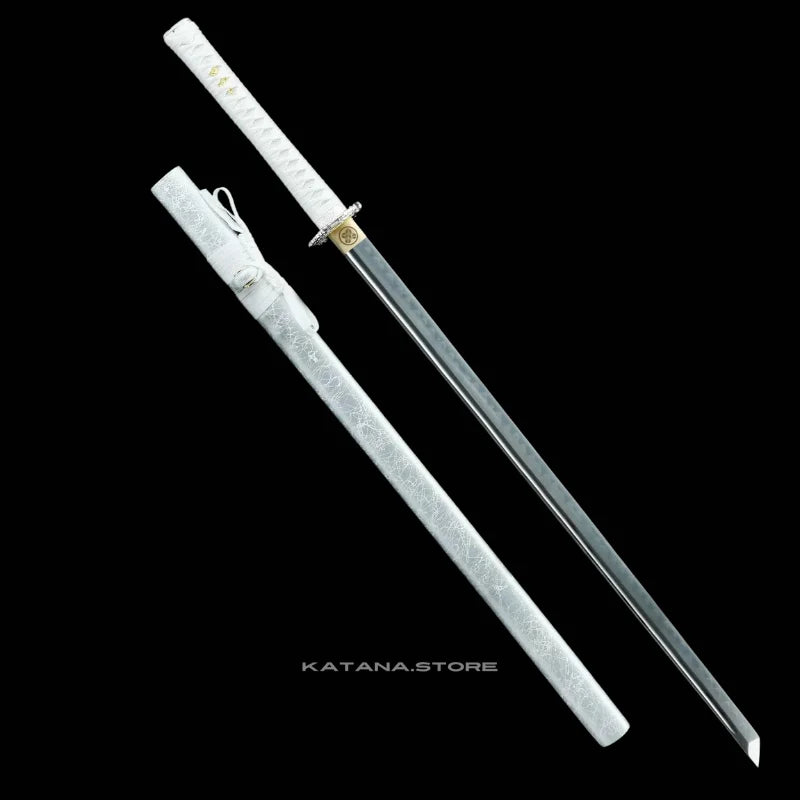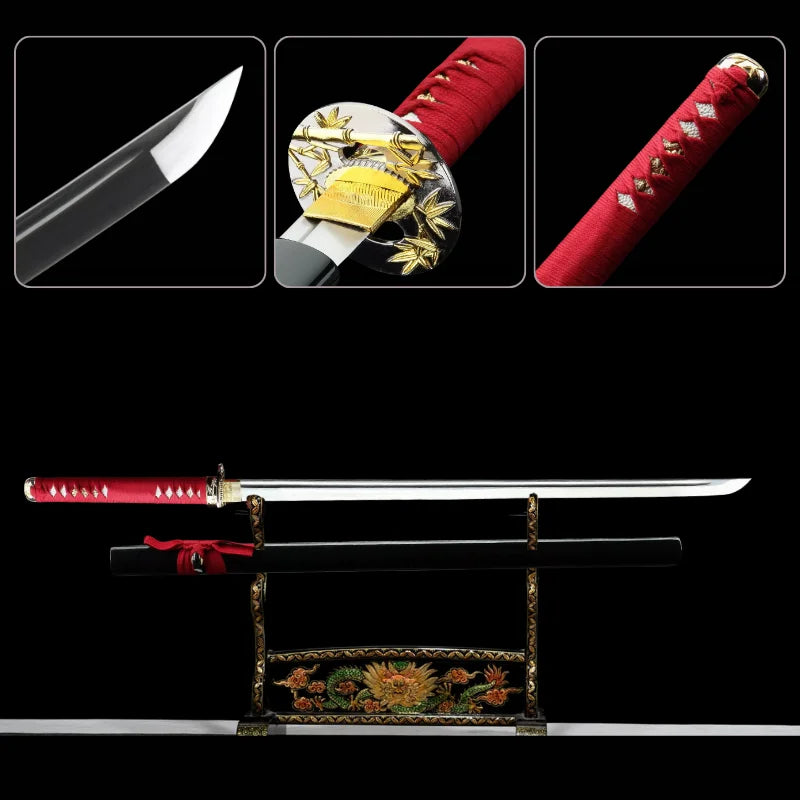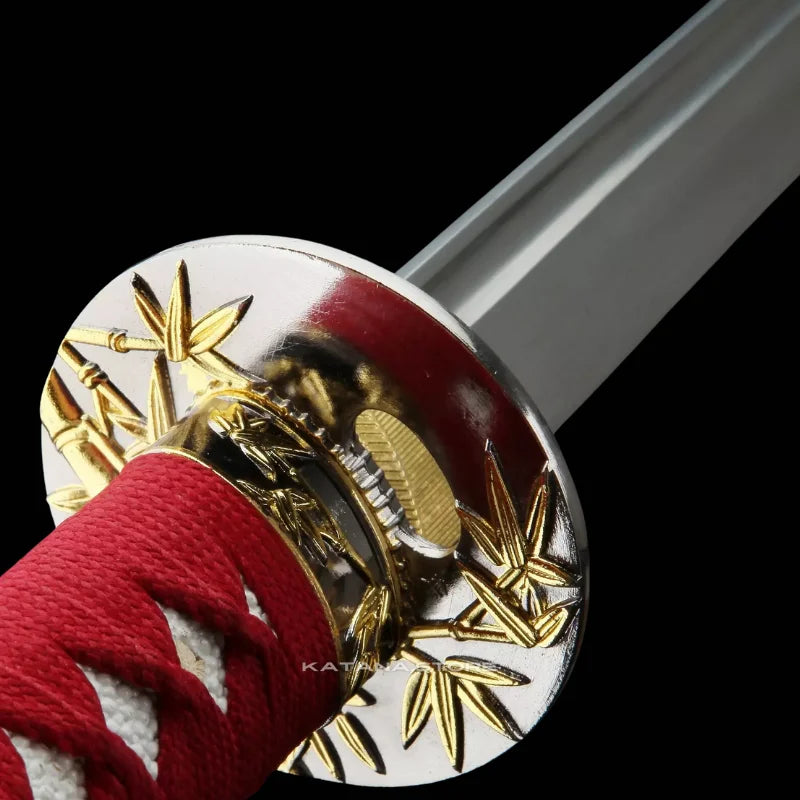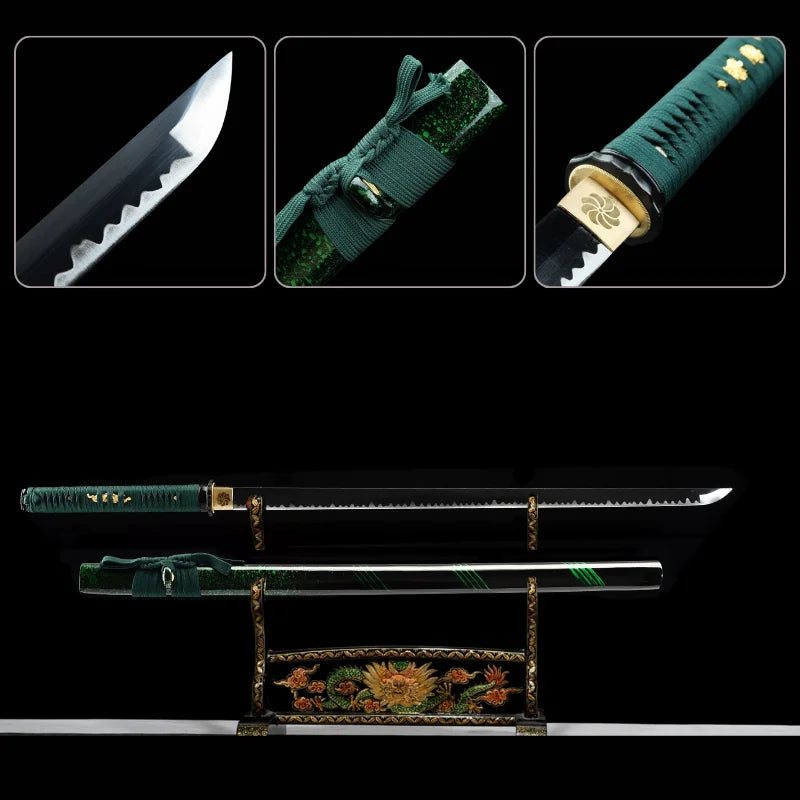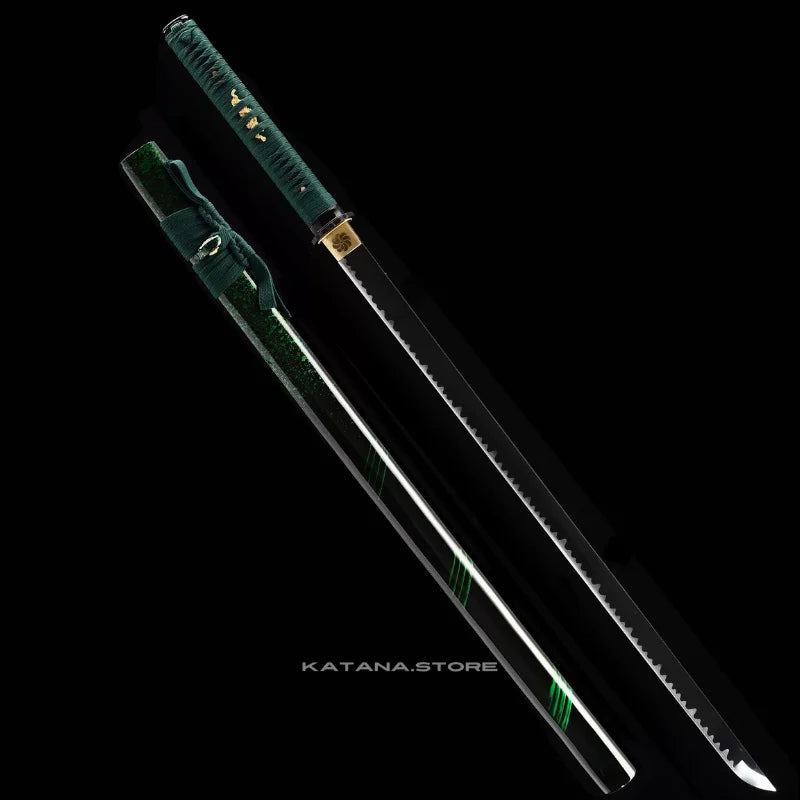Ninjato
Ninjato sword: Embrace the Legendary Weaponry of the Ninja
The ninjato, an incredible piece of weaponry that captures the stealth, dexterity, and tricky of its wielders, is well-known for its association to the legendary ninja warriors. Our collection serves as both a reminder of the historical significance of these swords and a show of their dazzling craftsmanship and minute consideration to detail.
Within the history of Japanese martial arts, the ninjato sword, also alluded to as the ninjaken or shinobigatana, has a noteworthy position. These swords, which are regularly appeared in chronicled accounts and prevalent culture, represent the innovativeness and adaptability of the ninja.
What is a ninjato
A ninjato is a kind of Japanese sword that was frequently connected to the ninja, a warrior class renowned for their clandestine actions and unusual battle strategies. The straight blade, square guard, and relatively short length of the ninjato are among of its notable features. These characteristics make the ninjato a remarkably adaptable weapon, enabling its user to use a number of novel techniques, such as climbing and close fighting.
The ninjato's usual straight blade was between 60 cm and 90 cm (approximately 24 to 35 inches), making it shorter than a regular katana. The blade was often thickened and sharpened on both edges, allowing for effective thrusting and slashing attacks.
The ninjato also had a square or octagonal guard and a straight or slightly curved tsuka (handle) that was often wrapped in a non-traditional way to provide a better grip. Unlike the katana, the ninjato did not have a long tsuba (handguard), which made it easier to conceal and draw quickly.
Ninjato vs katana
The ninjato and katana are both types of Japanese swords with distinct differences in their design, construction, and usage. While both the ninjato and katana are fascinating weapons with unique characteristics, they were designed for different purposes and have distinct differences in their design and usage.
The katana is a sword that's utilized for open fight and is regularly related with samurai since of its expanded length and bended edge. The ninjato, on the other hand, is thought to have been utilized by the ninja for furtive operations and stealth missions since its little length and straight edge permitted for more quick and agile movements. The design of the ninjato serves as an illustration of the ninja's inventiveness and agility, which are fundamental for surviving in their furtive line of work.
To summarize the most contrasts between the two, consider the taking after:
- Blade: The katana is designed for powerful cutting assaults with a longer, bended edge, but the ninjato regularly encompasses a straight edge that's shorter than a typical katana.
- Guard: The katana features a more ornate, curved guard that is intended to protect the hand during fighting, whereas the ninjato has a square or octagonal guard.
- Handle: To improve grip, the ninjato's handle is frequently wrapped in a non-traditional manner and is typically shorter than the katana's handle. The katana's handle is typically longer and wrapped traditionally.
- Weight and Balance: Compared to the katana, the ninjato is often lighter and more balanced, making it simpler to hold with one hand and employ in close combat. The katana is heavy and is best wielded with two hands.
- Historical Accuracy: There is significant disagreement regarding whether ninja truly utilized the ninjato, a blade that is frequently linked with them. On the other hand, samurai combatants in Japan commonly used the katana, a well-known weapon.
The ninjato was designed for stealth and close-quarters battle whereas the katana was meant for powerful, sweeping assaults in open combat.
Ninjato Sword Uses
Historically, the Ninjato was known for its versatility and effectiveness in stealth missions. It was an essential tool for the Shinobi or Ninja, widely used in feudal Japan. Today, these swords serve a variety of purposes:
Martial Arts Training: Ninjato swords are used in martial arts schools across the world, particularly in disciplines focusing on Japanese combat techniques. They are ideal for learning and practicing the art of swordsmanship due to their balanced weight and sturdy construction.
Cosplay and Historical Reenactment: The Ninjato’s unique design makes it a popular choice for cosplay enthusiasts and participants in historical reenactments. Its distinctive appearance adds authenticity to costumes and performances.
Collectibles: For sword enthusiasts and collectors, Ninjato swords are prized for their historical significance and craftsmanship. Each sword is a representation of the mysterious and often romanticized world of the ninja.
Home Decor: These swords also serve as exquisite decorative pieces. Displaying a Ninjato in your home or office can add an element of Japanese elegance and a touch of warrior spirit.
Self-Defense and Tactical Use: Although not as common, some individuals choose Ninjato swords for self-defense purposes, appreciating their sharpness, ease of handling, and concealability.
Cinematography and Stage Performances: Ninjato swords are also used in films, theatrical performances, and cultural displays, where their striking appearance and association with ninja lore add dramatic effect.
Authentic ninjato swords for sale
We offer the best Ninjatō swords are meticulously crafted to embody the true spirit of the ancient Japanese ninja warriors.
Our ninjatō swords are hand-forged using traditional Japanese methods and are made from high-quality carbon steel, ensuring durability and longevity. The straight blade of the Ninjato has a fuller, or grove, that serves to lighten the weight of the sword and improve its balance. It is honed on both ends. It is suited for close-quarters combat since the blade is often shorter than a regular katana, measuring 60 cm to 90 cm (about 24 to 35 inches).
Ninjato swords' blades are forged from high-carbon steel utilizing the time-tested technique of clay tempering. The blade is made robust, sharp, and flexible as a result of this procedure, which also gives it a lovely, unique design. The blades are not only lethal, but also stunning works of art since they have been honed to a razor edge and polished to a mirror shine.
Our ninjatō swords feature a traditional straight blade design with a square or octagonal guard and a shorter handle than a typical katana. The handles are wrapped in high-quality silk or cotton, and the tsuka-maki (wrapping) is done with precision and care, ensuring a comfortable and secure grip.
This collection of ninjatō swords includes a variety of styles and sizes to suit every preference and need. From shorter, more compact blades that are ideal for close-quarters combat, to longer blades that are better suited for outdoor use, our collection has something for everyone.
In addition to their functionality as weapons, our ninjatō swords also make excellent display pieces. Whether it is exhibited at a dojo, a martial arts school, or as a beautiful piece in your house or place of business. A ninjato is an incredible way to extend the assortment of tanto, wakizashi, and other traditional Japanese swords in your collection.
Our collection of hand-forged authentic ninjato swords is a confirmation to the expertise and workmanship of Japanese sword experts. Our swords are essential items for every fan of martial arts or collector of swords because of their great quality, lovely designs, and superior functionality.
Battle-Ready Ninjato Swords
Our collection of Battle-Ready Ninjato Swords embodies the essence of ancient Japanese martial traditions combined with modern craftsmanship. These swords, also known as Ninja swords, are characterized by their straight blade and typically square tsuba (hand guard), distinguishing them from the more common curved samurai swords like the katana.
Every Ninjato in our collection is forged with precision and care, ensuring that they are not only aesthetically pleasing but also fully functional and battle-ready. Made from high-quality materials such as tempered steel, our Ninjato swords feature full tang construction for optimal strength and durability. They are meticulously crafted to be razor-sharp, embodying the deadly efficiency associated with ninja weaponry.
In addition to being formidable weapons, our Ninjato swords are beautifully designed, featuring polished blades and traditionally inspired scabbards, often adorned with ornate details. These swords are perfect for practitioners of martial arts, particularly those interested in Ninjutsu, as well as for collectors seeking authentic, high-quality ninja weapons.
Filters
25 products


